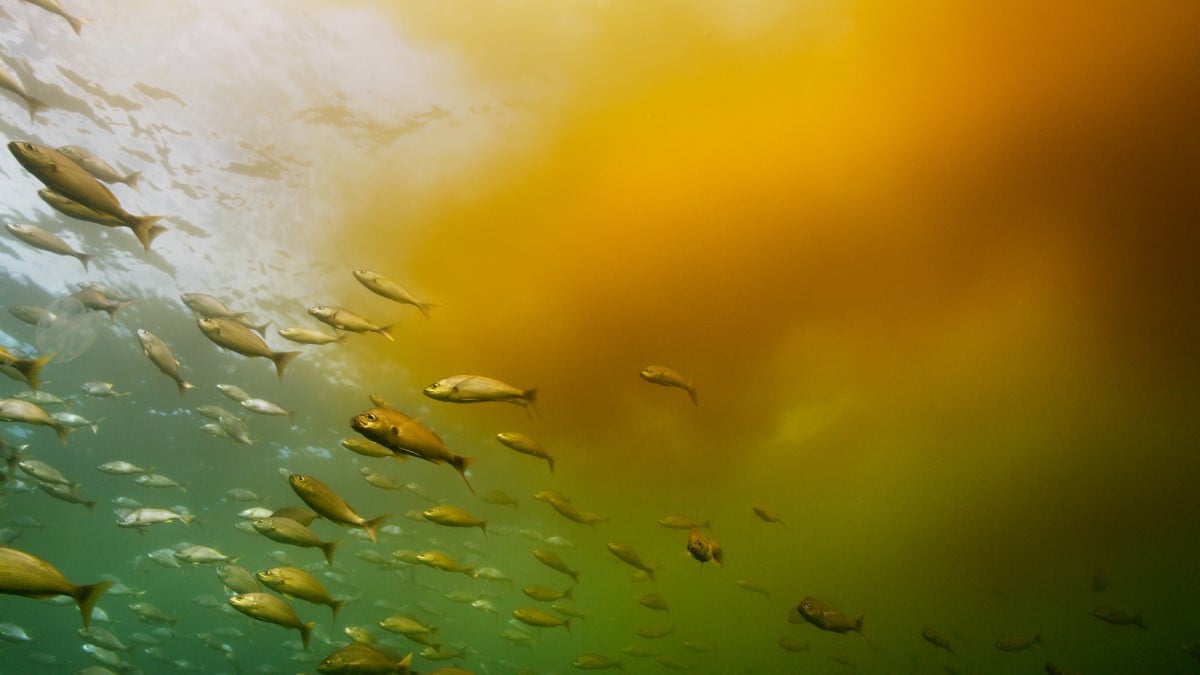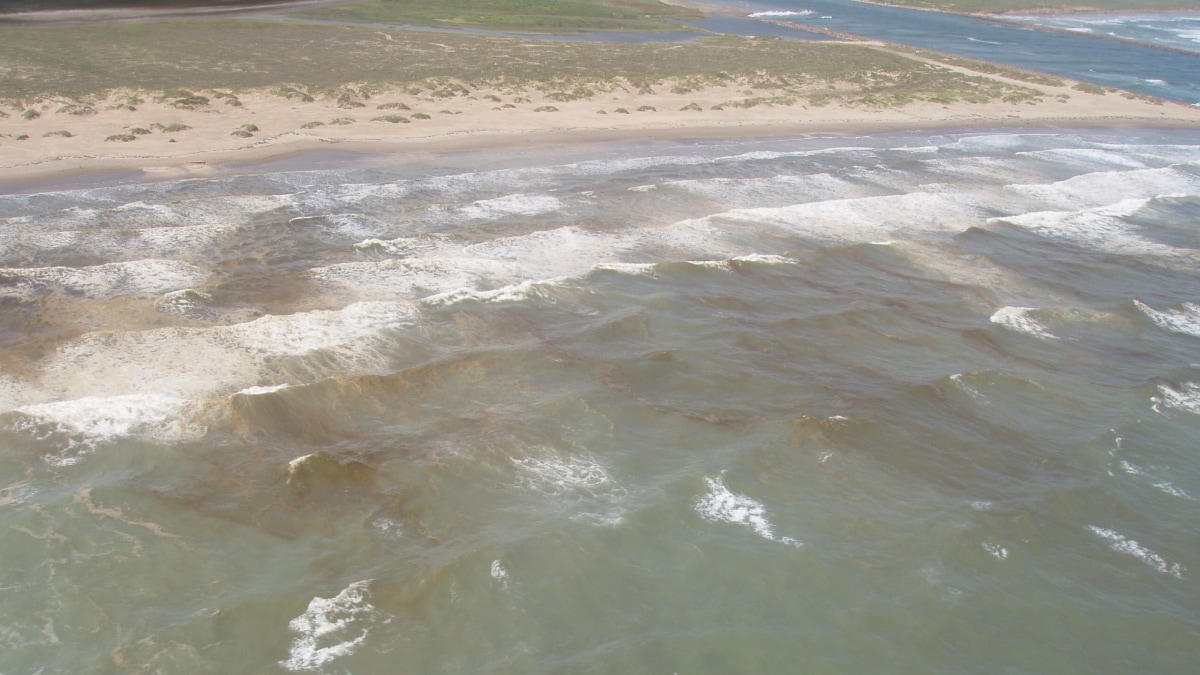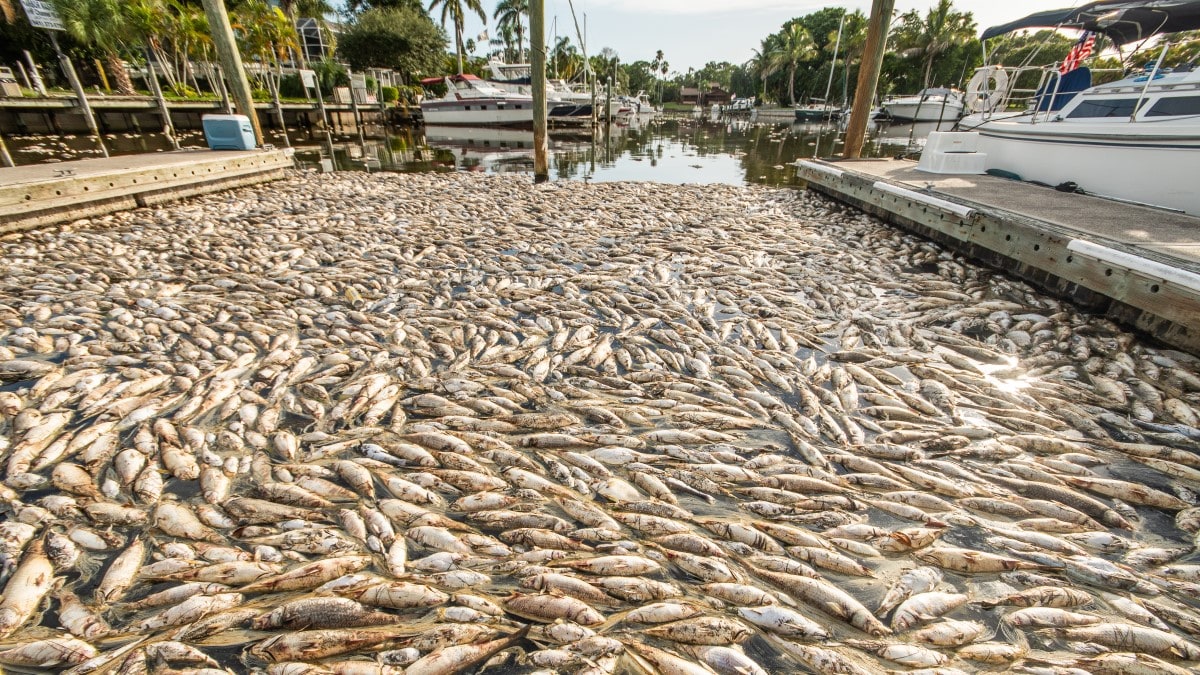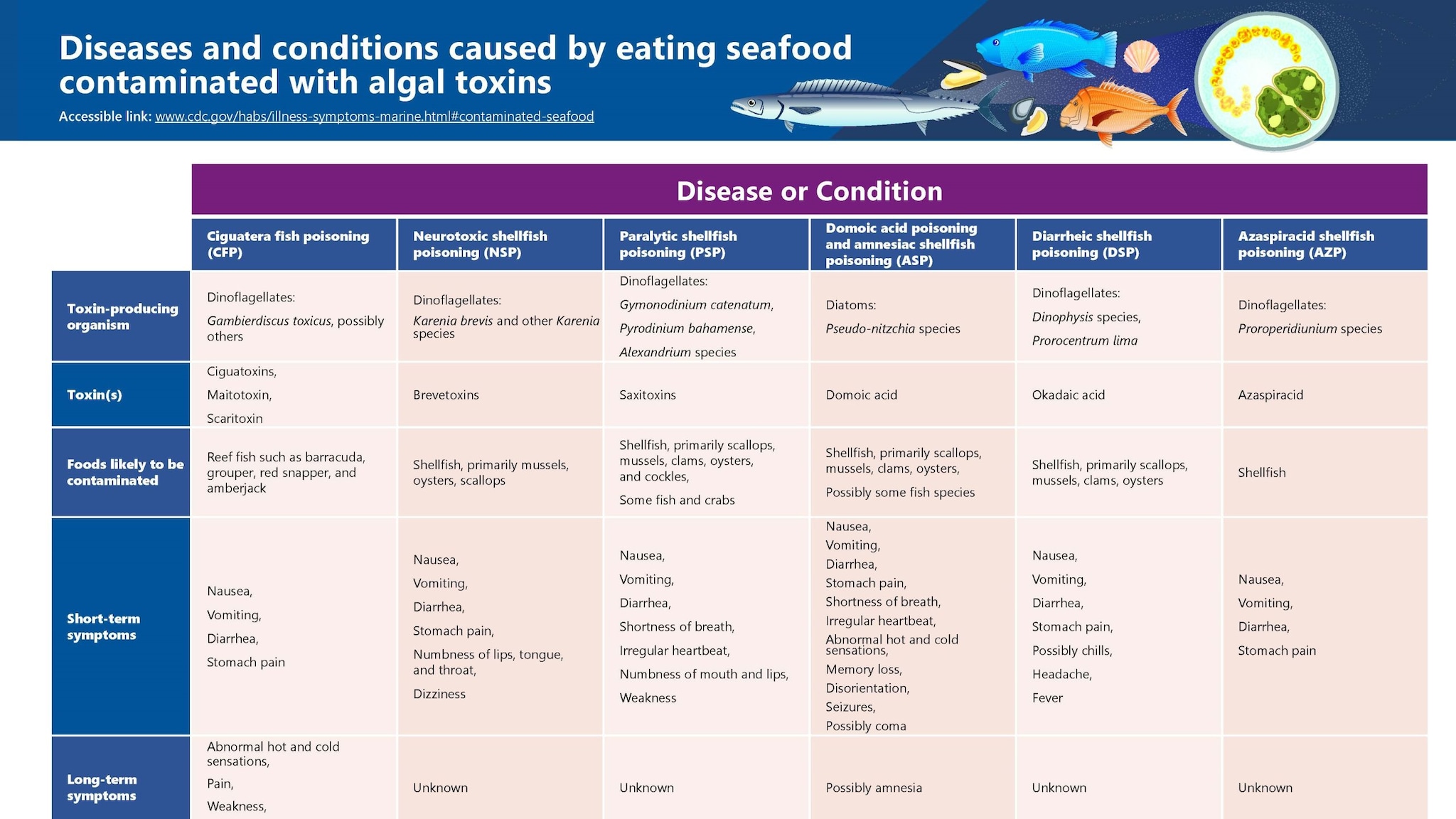Key points
- Algae that grow in salt water and produce toxins (poisons) can make people and animals sick.
- You can get sick by eating seafood, going in water, or breathing in sea spray containing these toxins.
- Symptoms can be mild to life-threatening, depending on the amount and type of toxin.

Signs and symptoms
Symptoms caused by harmful algal blooms in salt water, such as oceans or bays, vary depending on the type of harmful algal bloom toxin.
Serious symptoms are most often caused by eating seafood containing harmful algal bloom toxins. Going in water with a harmful algal bloom or breathing in sea spray may cause more mild symptoms.
If you think a harmful algal bloom made you sick, contact a healthcare provider or the Poison Control hotline at 1-800-222-1222. They can give you advice about how to feel better.
Karenia brevis red tide
Red tides in the Gulf of Mexico are one of the most widely known harmful algal blooms in the United States. These blooms are caused by the algae Karenia brevis, which makes a toxin called brevetoxin.
Breathing in sea spray or getting water on your skin during these red tides can cause symptoms including:
- Coughing or sneezing
- Shortness of breath
- Sore throat
- Eye irritation
- Rash
- Asthma attacks
Neurotoxic shellfish poisoning
Eating shellfish (for example, mussels, oysters, or scallops) containing brevetoxin can cause:
- Nausea
- Vomiting
- Diarrhea
- Stomach pain
- Numb lips, tongue, and throat
- Dizziness

Lorraine Backer
Red tides in the Gulf of Mexico are just one type of saltwater harmful algal bloom that can cause seafood poisoning. Keep reading to learn what symptoms are caused by other types of harmful algal bloom toxins that contaminate shellfish and fish.
Azaspiracid shellfish poisoning
Eating shellfish (for example, scallops or mussels) containing the toxin azaspiracid can cause:
- Nausea
- Vomiting
- Diarrhea
- Stomach pain
Ciguatera poisoning
Eating reef fish containing the toxins ciguatoxin, maitotoxin, or scaritoxin can cause short- or long-term symptoms. Reef fish include barracuda, grouper, red snapper, and amberjack.
Short-term symptoms
- Nausea
- Vomiting
- Diarrhea
- Stomach pain
Long-term symptoms
- Abnormal hot and cold sensations
- Pain
- Weakness
- Low blood pressure
Diarrhetic shellfish poisoning
Eating shellfish (for example, scallops, mussels, clams, or oysters) containing the toxin okadaic acid can cause:
- Nausea
- Vomiting
- Diarrhea
- Stomach pain
- Chills
- Headache
- Fever
Domoic acid poisoning and amnesic shellfish poisoning
Eating shellfish (for example, scallops, mussels, clams, or oysters) containing the toxin domoic acid can cause short- or long-term symptoms. Eating some types of fish containing this toxin may also make you sick.
Short-term symptoms
- Vomiting or diarrhea
- Shortness of breath
- Irregular heartbeat
- Abnormal hot and cold sensations
- Memory loss
- Feeling disoriented
- Seizures or possibly coma
Long-term symptoms
- Possibly memory loss (amnesia)
Paralytic shellfish poisoning
Eating fish or shellfish (for example, scallops, mussels, clams, oysters, cockles, or crabs) containing the toxin saxitoxin can cause:
- Nausea and vomiting
- Diarrhea
- Shortness of breath
- Irregular heartbeat
- Numb mouth and lips
- Weakness
- Muscle paralysis (not being able to move one or more parts of your body)
Signs in animals
Animals can be poisoned by swimming in or swallowing water with a harmful algal bloom. They can also be poisoned by eating algae, fish, or shellfish containing toxins. Harmful algal bloom toxins can build up in fish through larger fish eating smaller fish.
Animals can get seriously sick or die within hours to days of contact with harmful algal blooms or their toxins. Harmful algal blooms can cause widespread death among animals that live in or near bodies of salt water, such as oceans.
Mammals
Dolphins and Indian manatees can be poisoned by red tides in the Gulf of Mexico. The toxin (brevetoxin) made by these red tides can damage a manatee's lungs, in some cases causing them to die. Large numbers of poisoned dolphins sometimes get stranded on beaches.
California sea lions can be poisoned by a harmful algal bloom toxin called domoic acid. This toxin can damage their nervous systems, causing them to have seizures or behave strangely.
Birds
Birds can get sick and die after eating algae, fish, or shellfish containing harmful algal bloom toxins. For example, pelicans and cormorants can be poisoned. In some cases, thousands of birds may die.
Fish and other animals that live in water
Karenia brevis red tides can kill large numbers of fish, shellfish, and other animals that live in water.



